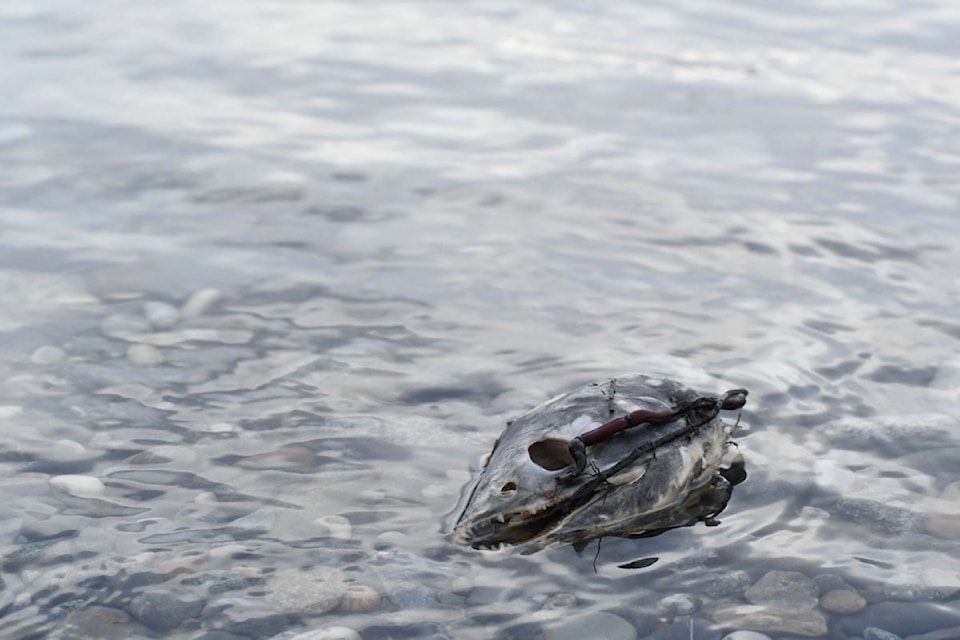While Chinook salmon usually take centre stage when it comes to discussions about Yukon River stock, another species also appears to be flailing — but only in a certain sub-tributary.
While it was generally a good season for fall chum this year, numbers from Fishing Branch, a tributary of the Porcupine River, fell below management and treaty goals, experts from Alaska and the Yukon said at the Yukon River Panel’s meeting in Whitehorse earlier this month.
Fishing Branch is where an estimated 65 per cent of Porcupine River fall chum spawn. It’s so significant that it has an interim management escapement goal separate from “mainstem” Yukon River fall chum — 22,000 to 49,000 fish. However, this year, only 18,171 successfully made the journey.
In a presentation the morning of Dec. 10, Jeff Estensen, a fall area management biologist with Alaska’s Department of Fish and Game, said it was “certainly an unusual year for chum salmon in the Yukon River.”
The summer chum run was later than usual, with the tail end meshing with the fall — normally, the sonar station at Pilot, near the mouth of the Yukon River, switches over to fall chum on July 18, but this year, summer chum were being counted into mid-August.
By early August, the department estimated the run totalled 700,00 to 800,000.
In a separate presentation, Fisheries and Oceans Canada’s (DFO) Jesse Trerice said an estimated 144,000 of the fish were Canadian-origin.
Those numbers meant that there were likely enough fish to achieve the interim management escapement goal of getting 70,000 to 104,000 to Canadian spawning grounds along the river mainstem. The run was also strong enough to allow for, on the Alaska side, fishing for personal as well as limited commercial use.
Alaska doesn’t have estimates yet for how many fall chum were harvested on the American side of the river for subsistence, but Estensen said the number is expected to be similar to 2018’s of about 65,00 fish, “well below” the five-year average of about 83,000.
Commercial fishers took 268,360.
However, even though Alaska closed harvest on its section of the Porcupine River beginning Aug. 23, the chum at Fishing Branch fell about 4,000 fish sort of hitting the lower end of the escapement goal.
DFO’s Trerice said approximately 34,000 Fishing Branch-origin chum were counted at Pilot; 27,805 at the Porcupine sonar, downstream from Old Crow; and 18,171 at Fishing Branch.
Old Crow residents harvested about a thousand fish.
Estensen acknowledged there’s been a “chronic inability” over the years to meet the escapement goal for Fishing Branch, where an estimated 65 per cent of Porcupine River fall chum are thought to spawn.
Fishing Branch chum make up only about four per cent of the total run and don’t have their own distinct pulse or place within the run, making it difficult to make targeted management decisions to protect the stock until it actually enters the Porcupine.
There’s also “a lot of uncertainty” around why the Fishing Branch chum, in particular, are doing poorly when the rest of the fall chum seem to be fine, Estensen said. He suggested that changes to the landscape being highlighted by residents in Old Crow — lakes disappearing and clear rivers going turbid for example — may be a factor.
Several panel members pointed out in question periods that getting the numbers to Fishing Branch has been an issue for years now.
“It’s been really frustrating for me because we don’t seem to be able to figure out how to deal with this,” U.S. panel member Andrew Bassich said. He, too, questioned if there had been a change in habitat, caused by climate change or otherwise, that was impacting the stock’s productivity.
Canadian panel member Alan von Finster acknowledged that while Estensen and his team were making efforts, it wasn’t producing results.
“People in Old Crow are really favourable to you and your efforts but the fish just aren’t there, and if the fish just aren’t there and if there’s no resolution in sight for that, then the next step has to be taken,” he said, although he declined to elaborate on what that next step might be.
Vuntut Gwitchin Councillor Darius Elias, who spoke up after questions about changes to the land around Old Crow, said there’s “traditional knowledge gap” when it comes to salmon “because things are happening so quickly” — and apparently changing for the worse.
“There’s a question from our people that, okay, because the salmon are so important, then we should bump this up to the Porcupine caribou issue on the coastal plan of Alaska on the Arctic National Wildlife Refuge,” he said.
“If we do that, we will be dealing with decision-makers in Washington. That’s how important this is to us… We have to do something.”
Contact Jackie Hong at jackie.hong@yukon-news.com
